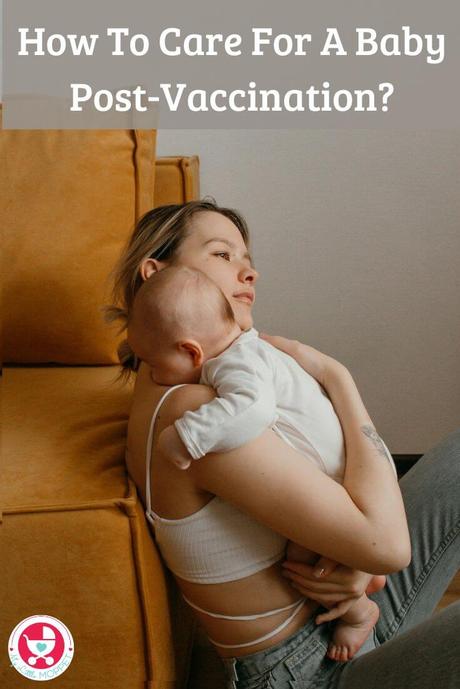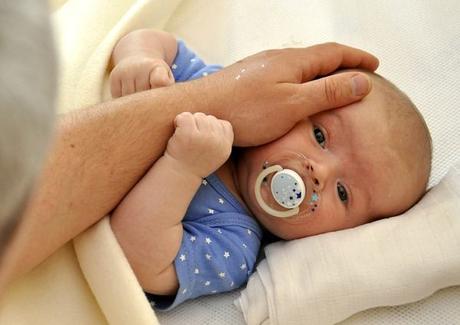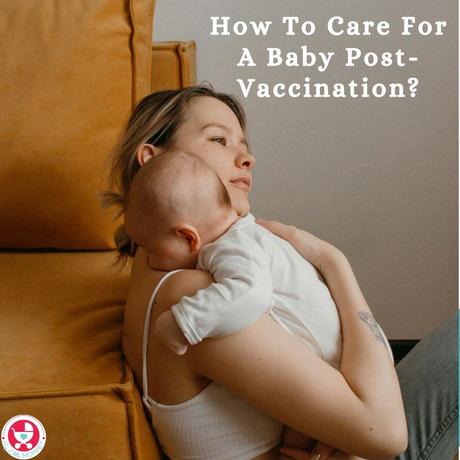Published: June 22, 2024 | Last Updated on: June 22, 2024 | by Hema
Here’s your complete guide on How To Care For A Baby Post-Vaccination, along with what to expect and important signs to look out for.
Jump To hide Common Side Effects after Vaccination in Babies How To Care For A Baby Post-Vaccination? For Newborns: For Pain or Swelling: For Fever: For Everything Else: When to see the Doctor References: Buy Healthy Nutritious Baby, Toddler food made by our own Doctor Mom !If you’re a parent and want to ensure that you’re doing the very best for your child’s long life and good health, the very first thing you must consider is immunization. As soon as your child is born, a regular immunization schedule will ensure that they stay protected from several dreaded diseases.
If you look around, you’ll find that many diseases have almost disappeared from the face of the earth thanks to dedicated immunization programs, while others have begun to make a comeback in places of high vaccine hesitancy.
⭐ Download FREE Recipe Ebooks for Babies & Toddlers

Immunization is particularly important for children because many diseases like measles can prove to be fatal for babies. This is also why it is important to start early and follow the recommended immunization schedule. Here is the latest one as per the Indian Academy of Pediatrics:

While vaccination is certainly life-saving, it can have short term difficulties in the form of mild side effects. These are completely normal and generally go away on their own within a few days. Here are some of the most common side effects you can expect after your baby’s vaccination.
Common Side Effects after Vaccination in Babies
- Crankiness, irritability or fussiness
- Crying slightly more than usual
- Tiredness for a few days
- Soreness or redness at the site of the injection for 2-3 days
- Hard bump or lump at the injection site for a few weeks
- Fever with a temperature below 38 degrees, particularly after the MenB vaccine
- Decreased appetite
- Nausea or vomiting
- Mild diarrhea, particularly after the oral Rotarix vaccine
- Measles-like rash after the MMR or Varicella vaccine (the rash is not contagious)
- Nasal congestion or runny nose after the Nasal Spray Influenza vaccine
As you can see, many of the side effects are generic, while some are specific to certain vaccines. In any case, you can make your child feel more comfortable by following a few simple tips.
How To Care For A Baby Post-Vaccination?

For Newborns:
The ‘5 S’ method is recommended for newborns or babies under 5 months, immediately after getting a vaccine. This includes the 5 ‘S’ steps – Swaddle, Side/Stomach, Shush, Swing and Suck – explained as follows:
1. Swaddle or wrap baby tightly so they’re snug and warm.
2. Place baby on the side or stomach
3. Make shushing sounds in baby’s ears
4. Swing baby in your arms or on a baby swing
5. Let baby suck on the breast, bottle or pacifier
For Pain or Swelling:
1. Place a cold compress over the injection site. Dip a clean cloth in cold water, squeeze out the excess and use.
2. Apply an ice pack. Place a few ice cubes in a clean cloth and gently dab at the affected area a few times a day
3. Move the child’s arm or leg (the site of the injection) several times a day to get rid of any swelling
4. Gently massage the injection site without rubbing too hard
5. Ask your doctor about any topical numbing

For Fever:
1. Dress baby in light clothes and avoid blankets
2. Offer lots of fluids, in the form of breast milk, formula or water
3. Avoid baths and sponge down baby’s body with lukewarm water instead
4. Give baby liquid paracetamol if the fever is over 37 degrees. This is particularly recommended after the MenB vaccine.
5. Avoid too much stimulation and let baby rest.
For Everything Else:
1. Offer the breast whenever the baby seems cranky – the act of sucking helps to soothe them immediately
2. Hold and cuddle baby for longer, speaking or singing in a soothing voice
3. Distract your baby with a book, toy or by playing games
4. If your baby’s appetite is low, offer more liquids. Babies over 6 months can have a fruit juice or something sweet.
5. Wash hands well after changing baby’s diaper especially after taking the Rotavirus vaccine since some of the antigen may be in the excreta.
6. Stay calm. Babies can sense if you get upset or worried, and it can be difficult for them to settle down.

When to see the Doctor
Once your child has taken their vaccination, it is important to be by their side and observe carefully for the next few days. While most of the post-vaccination symptoms will go away in this time, there are a few signs you need to watch out for, like these:
- Excessive crying or screaming for longer than usual
- Dehydration or refusal to eat or drink
- Appears weak and less active than usual
- Increased sleepiness and difficult to wake
- Looks pale or ill
- Persistent fever for more than 2 days that doesn’t go down with paracetamol
- High temperatures over 39 degrees
- Severe vomiting or diarrhea
- Swollen tummy or bloody stool, especially after the rotavirus vaccine
- Seizures or fits – shaking, twitching or jerking movements
- Raised pink or red spots or rashes on the skin
If you observe any of these signs take your child to the doctor right away. In very rare cases, a vaccine may cause an allergic reaction, but this usually occurs within 15 minutes of administering the vaccine. Allergic symptoms may appear as hives, difficulty breathing or swelling of the tongue, lips or throat. Alert the hospital staff if you notice any of these.
Since babies require multiple vaccinations before the age of two, the American Academy of Pediatrics recommends cutting down on the discomfort by opting for combination vaccines. Some examples are the Dtap (tetanus, diphtheria, and acellular pertussis) or the Hib (polio and haemophilus influenzae type b). Talk to your doctor about the right kind of combination vaccine for your child.
Don’t forget to update baby’s immunization card with the vaccine they’ve just taken, and use this opportunity to schedule the next one. With proper care and planning, you can ensure that your baby gets all the protection they need, with minimum pain and discomfort.

References:
- Indian Academy of Pediatrics (IAP) February 2024
- U.S. Centers for Disease Control and Prevention (CDC)
- National Centre for Immunisation Research and Surveillance Australia (NCIRS)
- National Health Services UK (NHS)
- UK Health Security Agency
- British Columbia Health Gateway
- India Vaccination Centre
Buy Healthy Nutritious Baby, Toddler food made by our own Doctor Mom !
Shop now!You may also like
- Your Complete Guide to Baby Wearing

- Your Complete Guide to Baby Sleep Training

- Baby Teeth Chart: A Complete Guide To Caring For…

- Your Complete Guide to Daycare

- Pregnancy and New Mom Care by Himalaya Baby Care

- 13 Safety Rules for Children at Home: A Complete…

Filed Under: Baby, Baby health, Vaccination
